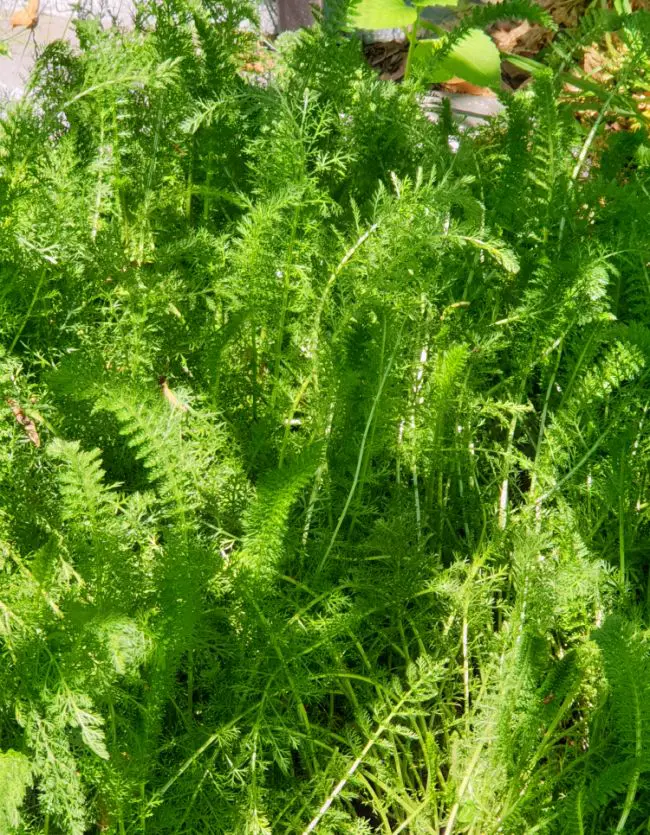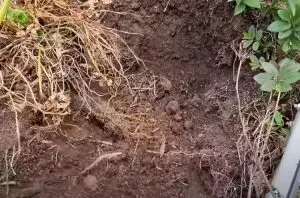Yarrow is native to temperate regions of Europe and Western Asia, and has been grown for many centuries as a medicinal and ornamental herb. While I’d heard the name ‘yarrow’ long ago, it wasn’t until I really got into gardening that I sat up and took notice. I then discovered that yarrow is not only beautiful, but useful and highly ornamental. Let’s have a closer look at yarrow and how to grow it.

What is Yarrow?
Yarrow (achillea millefolium) is a low-growing herbaceous perennial with attractive feathery leaves. It will flower periodically, throwing out flower stems about 60cm (24″), from which clusters of small flowers will grow. Yarrow flowers come in a variety of colours, including white, yellow, pink, orange red and purple.
This attractive plant from the Asteraceae family is easy to grow & suits a variety of climates despite its temperate origins. Germination is easy when starting from seed, and this plant requires only minimal care once established.

How to Use Yarrow
In past centuries, particularly during the medieval era, yarrow was known as a healing herb & was used in a variety of medicinal applications. Externally, fresh yarrow leaves were used in poultices to heal wounds, and prevent infection. The leaves are thought to be able to stop bleeding yet also have anti-spasmodic and circulation-boosting properties. Yarrow leaves can be used to make a tea, which is traditionally used to help with colds and flu. While modern research on the medical benefits of yarrow is lacking, anecdotal evidence and its lengthy historical use strongly suggests that yarrow has a variety of benefits.
There are other uses in the garden and home for yarrow. Scattered in layers through a compost bin, yarrow will help activate and break down compost ingredients. (Just as an aside, this is also true of azolla). Yarrow flowers work well in flower arrangements. Use them as a filler, as you do with babys breath, or hang the clusters upside down to dry out, then add them to posies.

How to Start Yarrow
Yarrow is a tough herb, so is good for beginner and experienced gardeners alike. Despite originating in warm temperate climate zones, yarrow is adaptable, tolerating drought, frost and strong sun. It is easy to grow from seed, germinating best when the soil temperature is around 18-22C (68-71F). Yarrow seeds are very small and can be fiddly to handle, but don’t need any soaking or cold stratification prior to sowing. Keep the soil moist, and the seeds should germinate within 21 days- remember, herbs often take quite a while to pop up.
Growing Conditions
While yarrow prefers temperatures in the range of 18-24C (65-70F) & a warm temperate climate, it can grow quite well in both hotter and colder areas. I grow yarrow here in the subtropics under the part-shade of a tree, and I add a DIY garden bed cover over the top during summer. Yarrow will tolerate light frosts, but again, will be happier if you can keep it closer to its preferred temperature range by bringing it indoors or growing it under a cover.

Once established, yarrow is drought-tolerant. Mine is growing in the chicken run where the hose can’t reach, so only gets a bucket of water when I remember. Nevertheless, it’s doing perfectly well there, & it isn’t fussy about the average soil either. Yarrow can adapt to a variety of soil types, although dry & well-drained conditions are best. Nutrient-rich soil can encourage aggressive growth in yarrow, so an unfertilised or unimproved soil is recommended. Yarrow does have some weed potential if left unchecked, which is not uncommon to plants like this which spread via runners.

Maintenance & Propagation
Yarrow can be pruned and/or cut back at most times of the year. As a hardy perennial, it will naturally spring back to life when it’s ready. In the subtropics, I find I can just yank off a few handfuls when it looks unruly and the plant never suffers. If you’re in a cold climate where you need to ‘overwinter’ plants, it’s best to cut yarrow back to the basal leaves in late autumn and wait for it to rejuvenate itself in spring.
Like mint and many other herbs, yarrow spreads via runners, which makes it easy to propagate. Once runners have appeared (see above pic), all you need do is snip them off and plant them. I plant runners into small pots, let them grow on for a few months, then plant them out around the garden. Larger yarrow plants can be propagated via division. As the name suggests, division means taking the whole plant and dividing it into parts so as to make numerous smaller plants. When dividing, make sure to keep some roots on each section so that the new plants can establish themselves.












